How Can Menu Planning Contribute to Successful Catering?
Most culinary experts can agree that the key to successful catering is meticulous and thoughtful menu planning.
Think of menu planning in catering like the blueprint for an architect or the screenplay for a filmmaker. But what is menu planning? And what is the importance of menu planning in the catering industry?
If you’re hungry for more information, we’ve got you covered. Here, we unpack the important role menu planning plays in catering ventures.
What Is Menu Planning?
At its core, menu planning is the detailed selection and organisation of dishes and beverages for an event, restaurant, or gathering.
It’s a detailed process of knowing your audience, anticipating dietary needs, and balancing flavours, textures, and aesthetics.
Menu planning is more than just listing dishes. It’s about creating an experience that’s both a feast for the eyes and the palate.
The Importance of Menu Planning in Catering
Here's why effective menu planning is the cornerstone of any successful catering business:
It keeps customers satisfied
Knowing your target audience and tailoring the menu to their preferences will ensure your guests have a pleasant experience. The right menu sets the tone, whether you’re catering a wedding with a need for vegan options or a family event that needs easy finger food.
It keeps things running smoothly
Planning ahead helps with managing inventory, reducing waste, and streamlining the cooking process. A well-thought-out menu means you buy what you need and use what you buy, with little to no waste.
It keeps your finances in order
Efficient menu planning can maximise your profits. Caterers can make a good profit by balancing high- and low-cost items and adjusting portion sizes for guests.
What’s The Most Important Consideration in Menu Planning?
So,what is the most important consideration in menu planning?
Understanding your client and their guests.
This means you need to consider dietary requirements, flavour preferences, and even presentation style.
Ensuring the menu is not only delicious but relevant and personalised to your client is the compass that guides the entire planning process.
How to Price and Plan a Catering Menu
When planning a menu, you need to strike the right balance between cost, quality, and presentation. Here are some steps to help you price and plan your menu successfully:
Understand costs
Before setting a price and quoting a client, you need a clear breakdown of your costs. This covers costs for ingredients, labour, overheads such as rent and utilities, and any other expenses.
Determine your markup
You should set a markup based on industry standards, desired profit margins, and what the market will bear. It's crucial to find the sweet spot between being competitive and maintaining profitability.
Consider tiered options
Offering tiered pricing options, like basic, premium, and luxury packages, can cater to a wider audience and varying budgets.
Regularly review and adjust
Ingredient prices can fluctuate, and operational costs may change. It’s important to review your pricing regularly to ensure it remains both competitive and profitable.
Seek feedback
Take the opportunity to engage with clients post-event to understand what worked and what didn't. Their feedback can offer valuable insights for future menu planning and pricing.
Your Recipe for Success
In the catering world, menu planning is both an art and a science. Successful catering isn't just about the delicious dishes served; it's about the experience each dish brings.
It’s the caterer's job to give clients an unforgettable experience with perfect flavours and presentations. But beyond the artistry lies the pragmatic approach of understanding costs, clientele, and market dynamics.
Remember that with any catering venture, the magic lies in the details. Effective menu planning will ensure success with clients and, ultimately, the success of a catering business.



